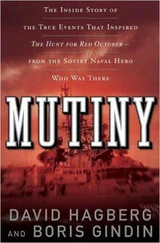By hurling the harpoon he would transform this gigantic, passive creature into an angry, panicked monster that could easily dispatch him into the hereafter with a single swipe of that massive tail. Or, even worse, the whale might turn around and come at them with its tooth-studded jaw opened wide. New boatsteerers had been known to faint dead away when first presented with the terrifying prospect of attaching themselves to an infuriated sperm whale.
As Lawrence stood at the tossing bow, waves breaking around him, he knew that the mate was analyzing every one of his movements. If he let Chase down now, there would be hell to pay.
“Give it to him!” Chase bawled. “Give it to him!”
Lawrence hadn’t moved when there was a sudden splintering crack and crunch of cedar boards, and he and the other five men were airborne. A second whale had come up from beneath them, giving their boat a tremendous whack with its tail and pitching them into the sky. The entire side of the whaleboat was stove in, and the men, some of whom could not swim, clung to the wreck. “I presume the monster was as much frightened as ourselves,” Nickerson commented, “for he disappeared almost instantly after a slight flourish of his huge tail.” To their amazement, no one was injured.
Pollard and Joy abandoned the hunt and returned to pick up Chase’s crew. It was a dispiriting way to end the day, especially since they were once again down a whaleboat, a loss that, in Nickerson’s words, “seemed to threaten the destruction of our voyage.”
SEVERAL days after Chase’s boat was repaired, the lookout once again sighted whales. The boats were dispatched, a harpoon was hurled—successfully—and the whaleline went whizzing out until it was finally snubbed at the loggerhead, launching the boat and crew on the voyage’s first “Nantucket sleigh ride,” as it would come to be called.
Merchant seamen spoke derisively about the slow speeds of the average bluff-bowed whaleship, but the truth of the matter was that no other sailors in the early nineteenth century experienced the speeds of Nantucket whalemen. And, instead of doing it in the safe confines of a large, three-masted ship, the Nantucketer traveled in a twenty-five-foot boat crammed with half-a-dozen men, rope, and freshly sharpened harpoons and lances. The boat rocked from side to side and bounced up and down as the whale dragged it along at speeds that would have left the fleetest naval frigate wallowing in its wake. When it came to sheer velocity over the water, a Nantucketer—pinned to the flank of a whale that was pulling him miles and miles from a whaleship that was already hundreds of miles from land—was the fastest seaman in the world, traveling at fifteen (some claimed as many as twenty) bone-jarring knots.
The harpoon did not kill the whale. It was simply the means by which a whaleboat crew attached itself to its prey. After letting the creature tire itself out—by sounding to great depths or simply tearing along the water’s surface—the men began to haul themselves, inch by inch, to within stabbing distance of the whale. By this point the boatsteerer and the mate had traded places, a miraculous feat in its own right on a craft as small and tender as a whaleboat. Not only did these two men have to contend with the violent slapping of the boat through the waves—which could be so severe that nails started from the planks in the bow and stern—but they had to stay clear of the whale line, quivering like a piano wire down the centerline of the boat. Eventually, however, the boatsteerer made it aft to the steering oar and the mate, who was always given the honor of the kill, took up his position in the bow.
If the whale was proving too spirited, the mate would hobble it by taking up a boat-spade and hacking away at the tendons in the tail. Then he’d take up the eleven- to twelve-foot-long killing lance, its petal-shaped blade designed for piercing a whale’s vital organs. But finding “the life” of a giant swimming mammal encased in a thick layer of blubber was not easy. Sometimes the mate would be forced to stab it as many as fifteen times, probing for a group of coiled arteries in the vicinity of the lungs with a violent churning motion that soon surrounded the whaleboat in a rushing river of bright red blood.
When the lance finally found its mark, the whale would begin to choke on its own blood, its spout transformed into a fifteen- to twenty-foot geyser of gore that prompted the mate to shout, “Chimney’s afire!” As the blood rained down on them, the men took up the oars and backed furiously away, then paused to watch as the whale went into what was known as its flurry. Beating the water with its tail, snapping at the air with its jaws—even as it regurgitated large chunks of fish and squid—the creature began to swim in an ever tightening circle. Then, just as abruptly as the attack had begun with the first thrust of the harpoon, it ended. The whale fell motionless and silent, a giant black corpse floating fin-up in a slick of its own blood and vomit.
This may have been the first time Thomas Nickerson had ever helped kill a warm-blooded animal. Back on Nantucket, where the largest wild quadruped was the Norway rat, there were no deer or even rabbits to hunt. And as any hunter knows, killing takes some getting used to. Even though this brutal and bloody display was the supposed dream of every young man from Nantucket, the sentiments of an eighteen-year-old green hand, Enoch Cloud, who kept a journal during his voyage on a whaleship, are telling: “It is painful to witness the death of the smallest of God’s created beings, much more, one in which life is so vigorously maintained as the Whale! And when I saw this, the largest and most terrible of all created animals bleeding, quivering, dying a victim to the cunning of man, my feelings were indeed peculiar!”
THE dead whale was usually towed back to the ship headfirst. Even with all five men rowing—the mate at the steering oar sometimes lending a hand to the after oarsman—a boat towing a whale could go no faster than one mile per hour. It was dark by the time Chase and his men reached the ship.
Now it was time to butcher the body. The crew secured the whale to the Essex ’s starboard side, with the head toward the stern. Then they lowered the cutting stage—a narrow plank upon which the mates balanced as they cut up the body. Although the stripping of a whale’s blubber has been compared to the peeling of an orange, it was a little less refined than that.
First the mates hacked a hole in the whale’s side, just above the fin, into which was inserted a giant hook suspended from the mast. Then the immense power of the ship’s windlass was brought to bear, heeling the ship over on its side as the block-and-tackle system attached to the hook creaked with strain. Next the mates cut out the start of a five-foot-wide strip of the blubber adjacent to the hook. Pulled by the tackle attached to the windlass, the strip was gradually torn from the whale’s carcass, slowly spinning it around, until a twenty-foot-long strip, dripping with blood and oil, was suspended from the rigging. This “blanket piece” was severed from the whale and lowered into the blubber room belowdecks to be cut into more manageable pieces. Back at the corpse, the blubber-ripping continued.
Once the whale had been completely stripped of blubber, it was decapitated. A sperm whale’s head accounts for close to a third of its length. The upper part of the head contains the case, a cavity filled with up to five hundred gallons of spermaceti, a clear, high-quality oil that partially solidifies on exposure to air. After the ship’s system of blocks and tackles hauled the head up onto the deck, the men cut a hole into the top of the case and used buckets to remove the oil. One or two men might then be ordered to climb into the case to make sure all the spermaceti had been retrieved. Spillage was inevitable, and soon the decks were a slippery mess of oil and blood. Before cutting loose the whale’s mutilated corpse, the mates probed its intestinal tract with a lance, searching for an opaque, ash-colored substance called ambergris. Thought to be the result of indigestion or constipation on the part of the whale, ambergris is a fatty substance used to make perfume and was worth more than its weight in gold.
Читать дальше












